I’ve been asked about setting and overnight mooring quite a few times, so here is how I work it. Use and adapt this as you choose, but be aware that I consider it appropriate for light duty only. In other words, you do this at your own risk!
I got the method from this post – http://www.neilmoomey.com/howtos/anchor_buoy/ – although my version is simplified a good bit and uses a large stainless steel ring rather than a section of drainpipe to form the pulley.
I also go into what I’m doing in a bit more detail on the video below (roughly the 22 to 30 minute mark).
If you read the post linked above first then the video probably makes a bit more sense. Although the guy who describes the technique is using it in Alaska, it’s not something I’d use in anything other than sheltered conditions and away from strong tides. I actually think it will stand up to a fair bit of abuse, but I like to sleep soundly at night too!
Equipment
Nowadays I only use my normal anchor rig, slightly reconfigured for mooring purposes. My setup is completely contained in this box, which makes it easy to move the rope around.
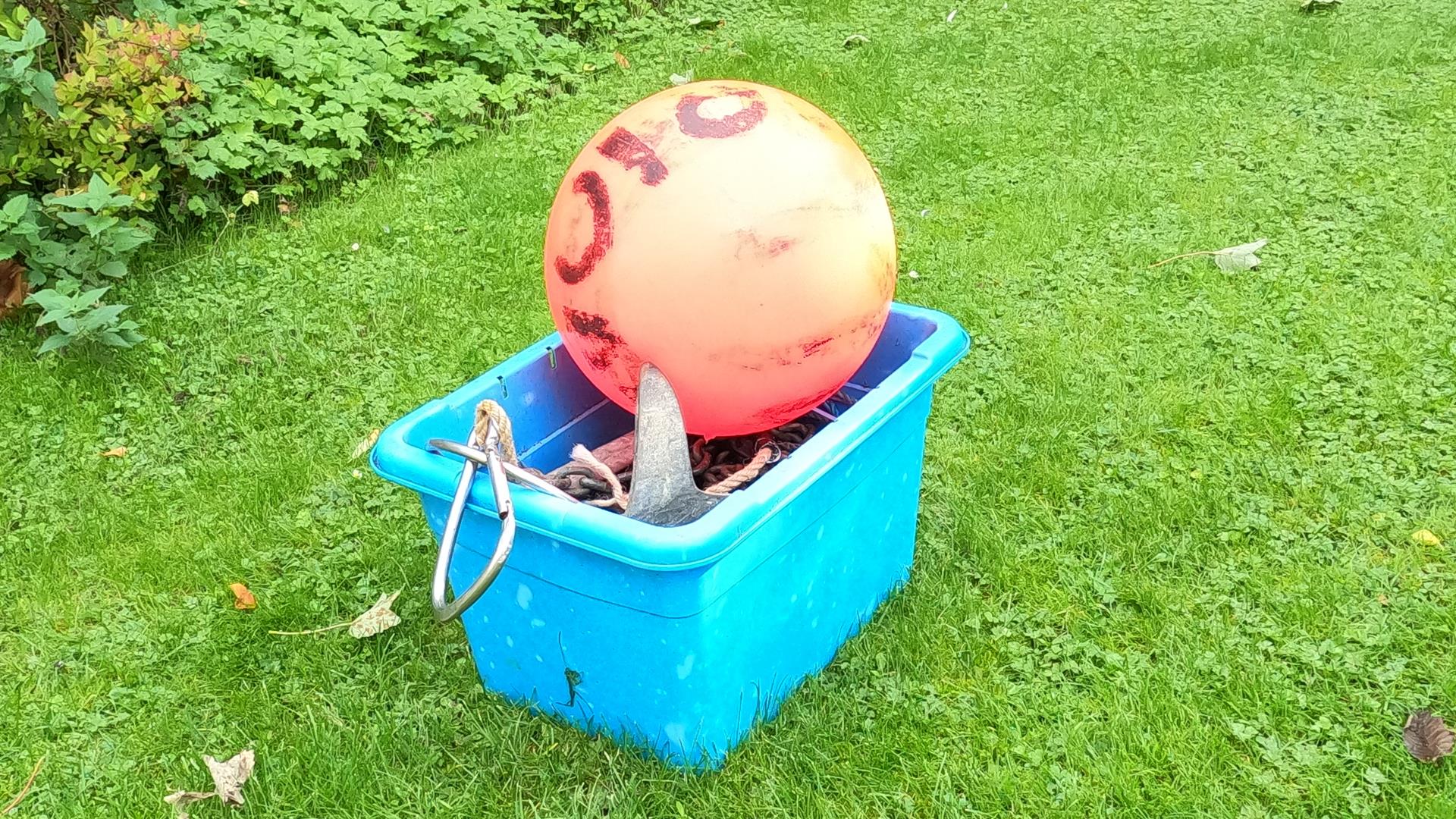
For my 16 foot boat I have a 5kg Bruce anchor coupled with 10 metres of heavy chain shackled to 220 metres of 10mm polypropylene rope. I also use a 200mm stainless steel ring clipped to a buoy and retrieve using the Alderney ring method.
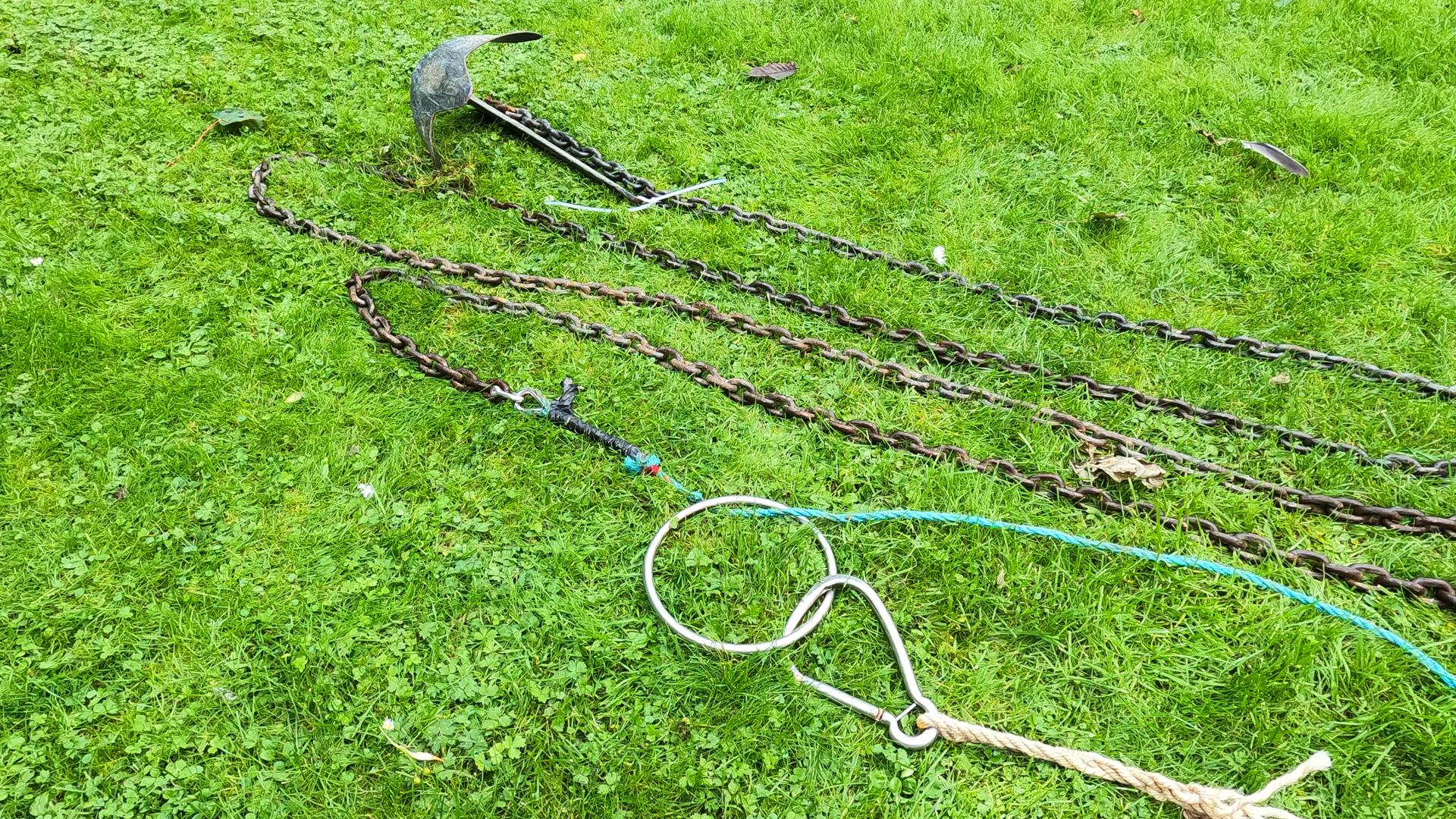
Preparing the Anchor
Converting this to a mooring rig means:
- Unclip the Alderney ring buoy, leaving only the stainless steel ring. The buoy is not used at all in this setup.
- Unshackle the polypropylene rope from the anchor chain
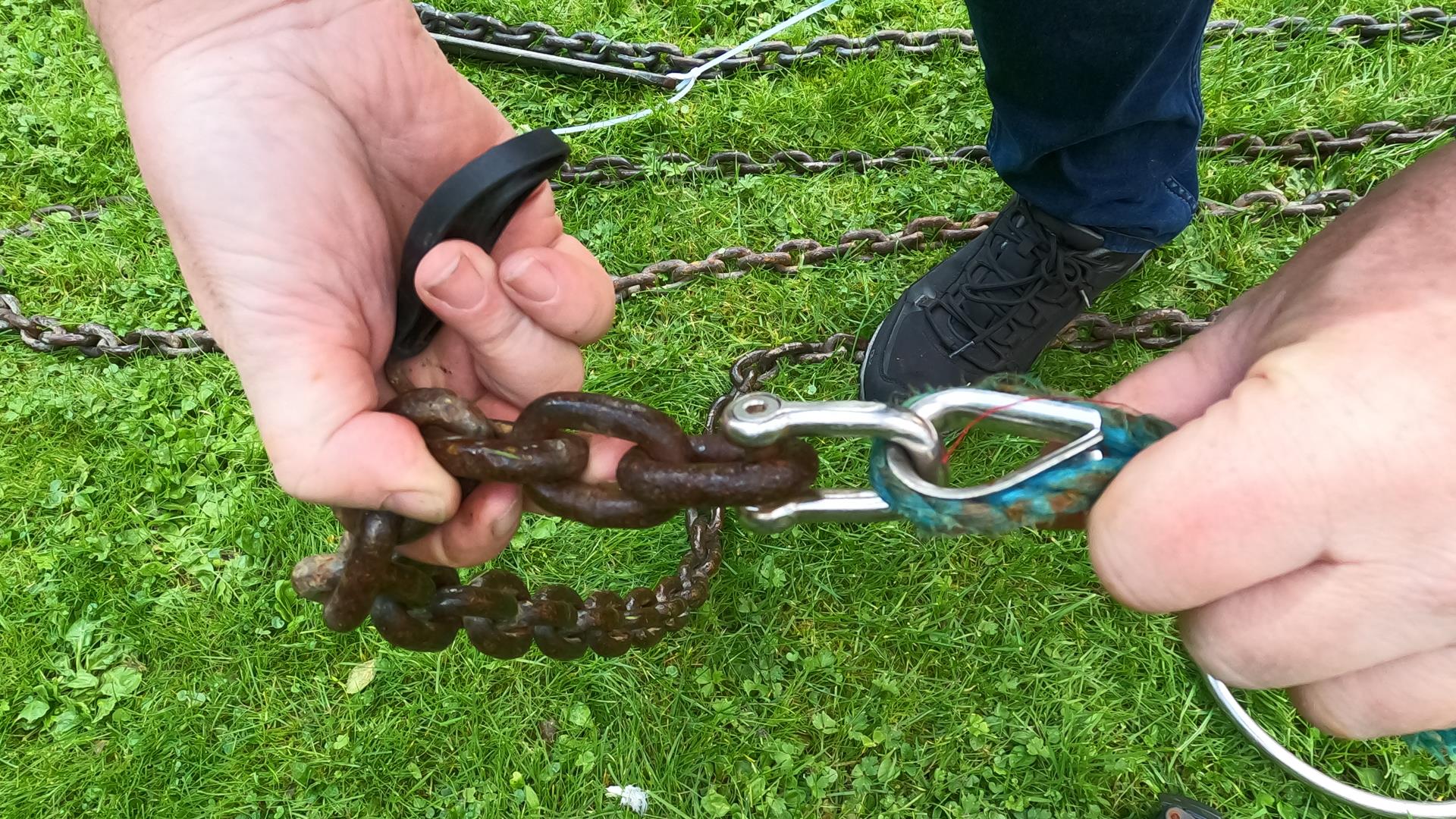
3. Now attach the anchor chain shackle to the stainless steel Alderney ring. The ring now acts as a pulley at the end of the chain.
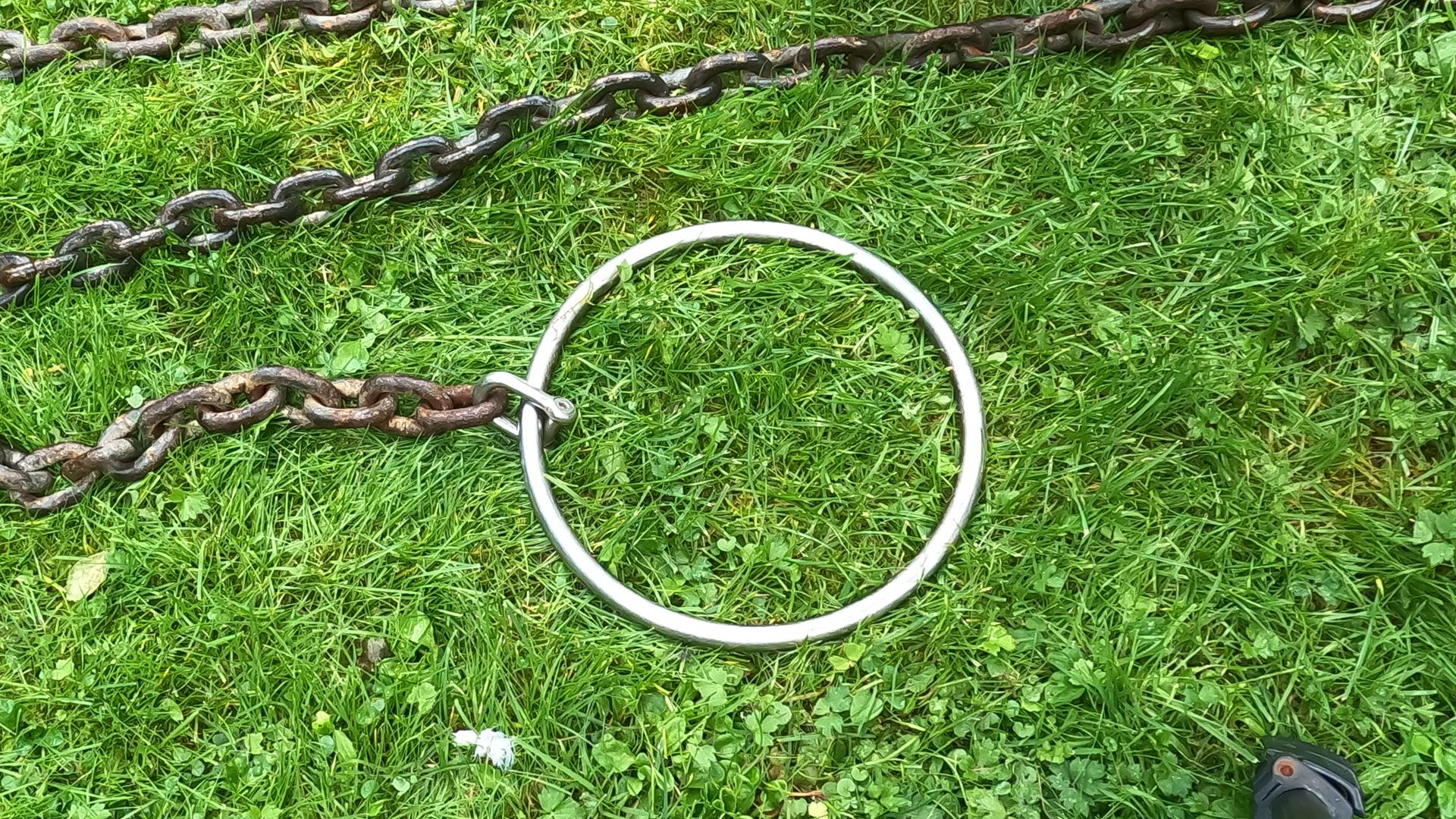
4. Thread the 10mm polypropylene through the Alderney ring
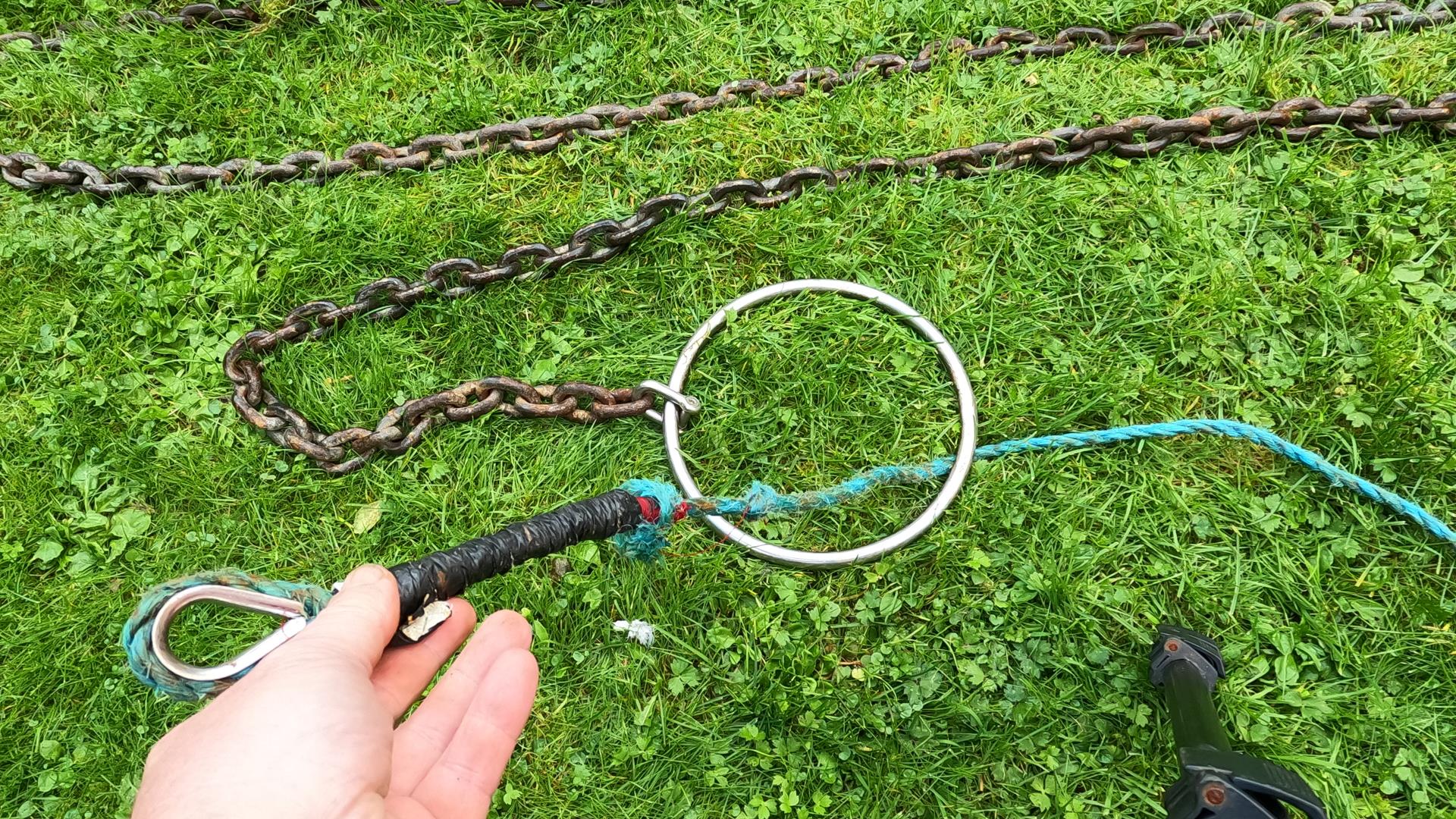
5. Now tie off the end of your anchor rope to a cleat. Kiss goodbye to your anchor if you forget!

Dropping Anchor
Your anchor is now configured to act as a mooring, but everything is still sitting on your boat. Now motor out to where you want to drop anchor and moor your boat.
I’m trying to hit water deep enough to keep my boat afloat at low tide, or else have her dry out onto sand rather than rock. Obviously life is easier on freshwater with a more constant water depth! I normally carry 220m of anchor rope which gives a max of 110m from the point at which you tie round a tree or rock on the shoreline. In practice I’m usually running with 50-70m distance between boat and tie off point.
Drop anchor and throw the Alderney ring overboard with it. Then reverse back onshore, paying out anchor line as you go. At this point you have one end of the anchor rope tied off to your boat, heading off to your Alderney ring and then back to your anchor rope box.
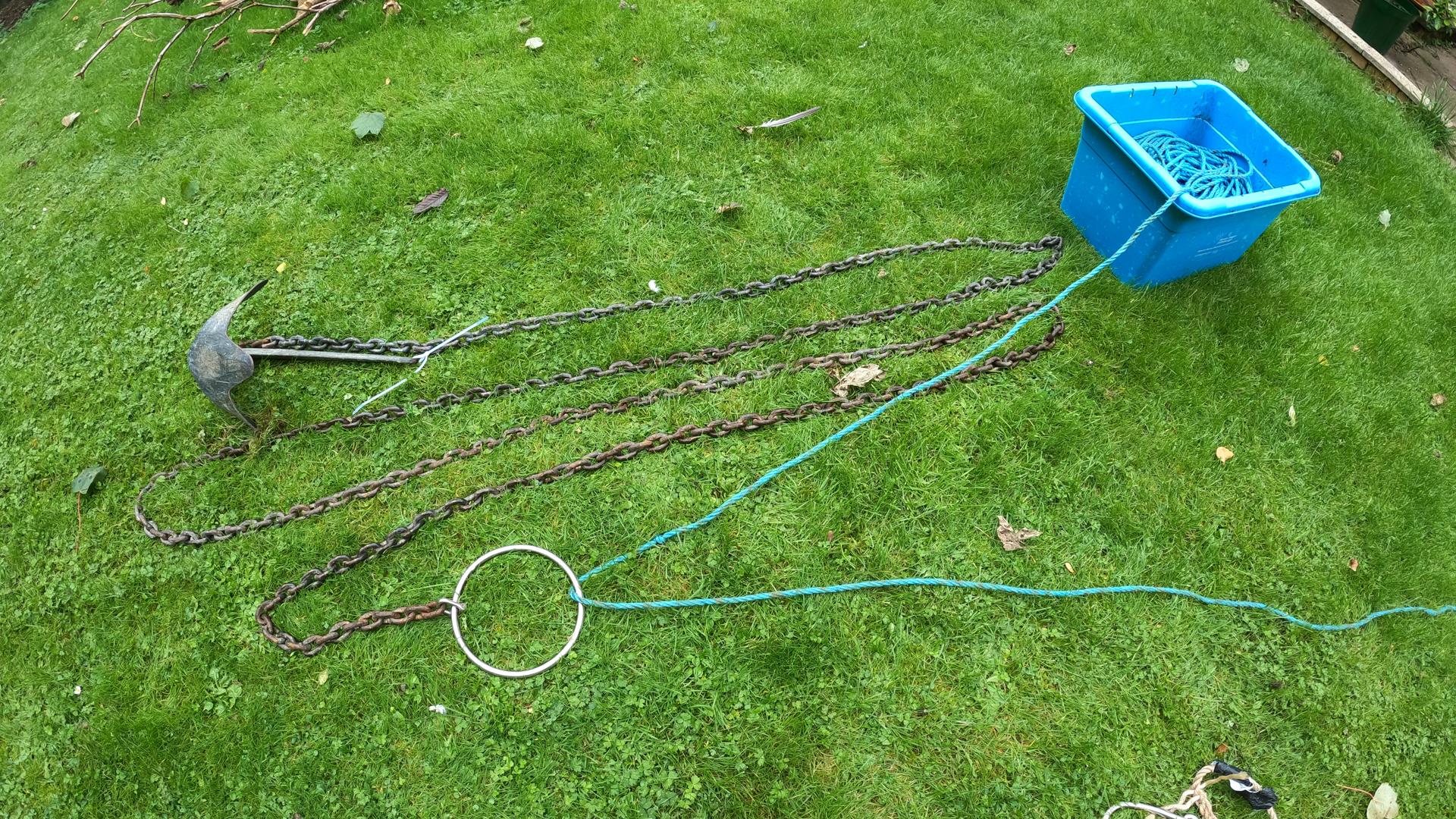
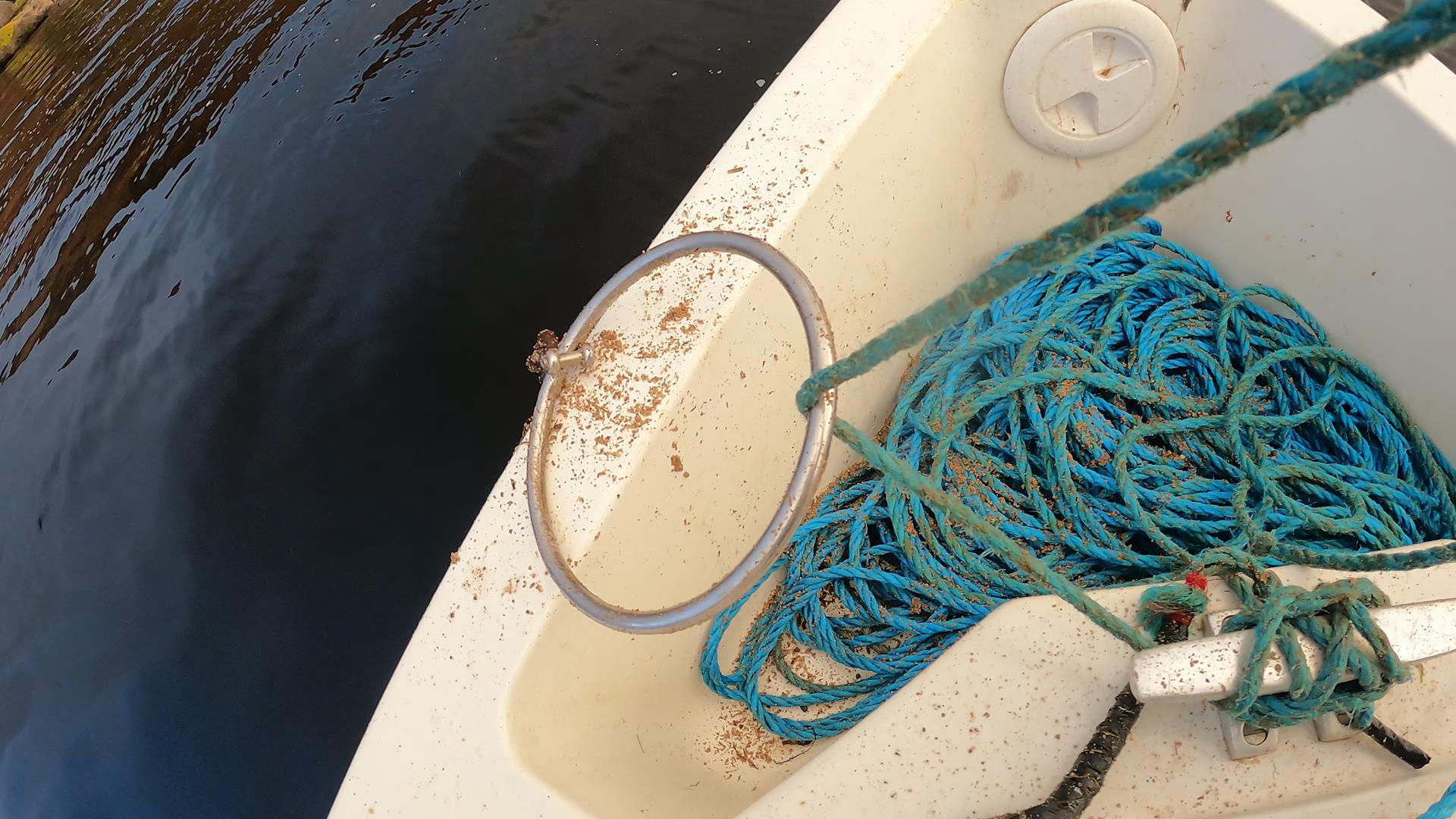
Unless you are mooring at high tide you should flake out rope to cover the distance between where your boat is now and the HW mark. Strictly speaking you can get away without doing this, but it makes life easier in practice.
Take the rope that feeds into your anchor box (i.e. not the end you’ve tied off to a cleat). Use this to tie a knot in the bow eye of your boat. I use a round turn and 3 half hitches, but whatever you feel comfortable with. You could also use a locking carabiner on a loop of anchor line, which may work better if you deal with a larger tidal range.

Untie the end of your anchor line from the cleat you attached it to. The boat is now held only by the rope you’ve just attached to the bow eye.
Take your anchor rope box ashore and also the end of the anchor line. Pull on the end of the anchor line (the end you’ve just untied from that cleat, not the end sitting in the box). The boat will move off the shoreline and head towards the anchor. Rope should start peeling out of your anchor box.
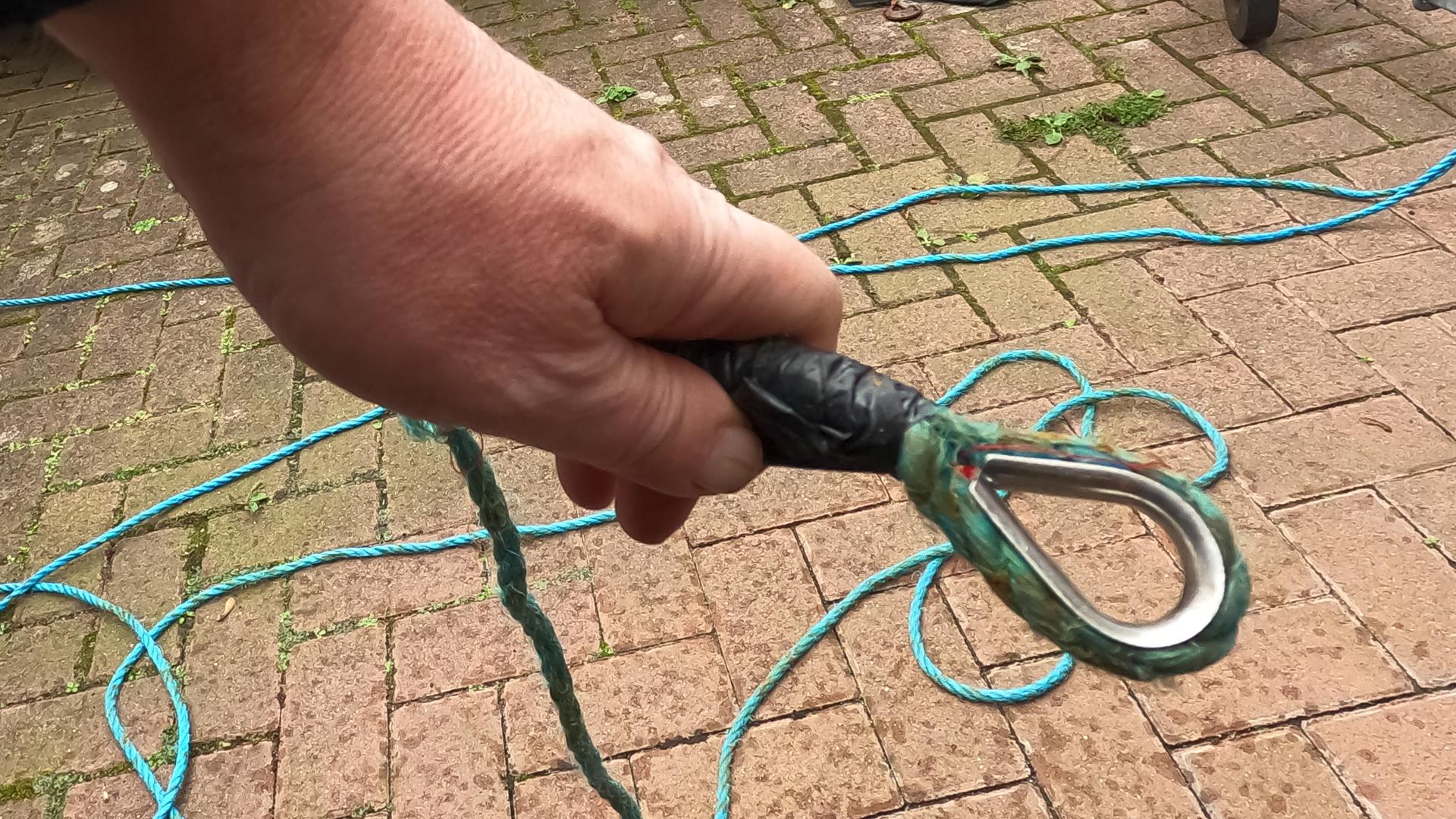
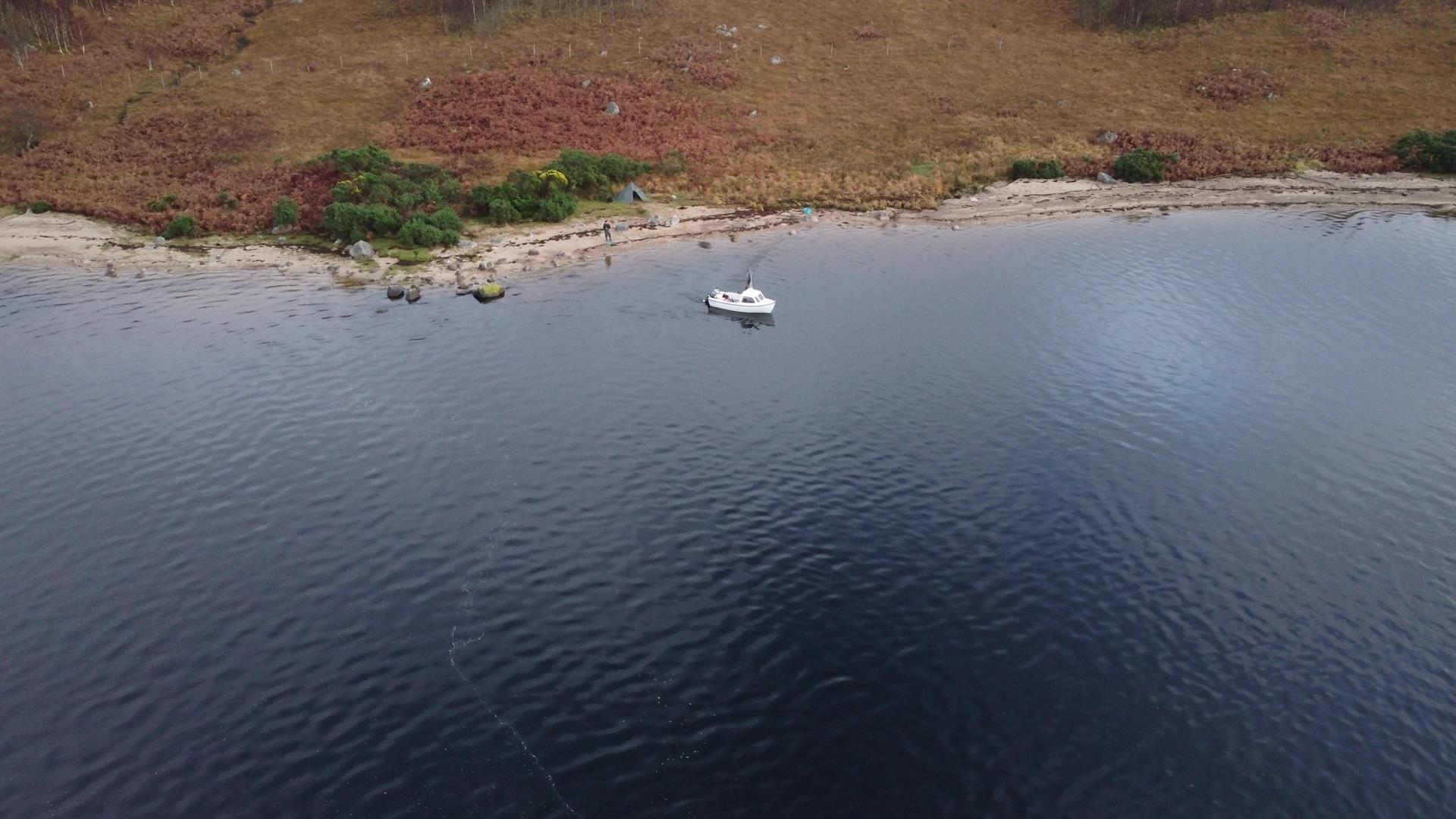
Simply pull on the rope until you can’t go any further. I normally put a fair bit of effort in to this, just to make sure the anchor has bedded in OK.
Securing your Mooring
Tie off both ends of the rope to suitable trees if you can, or to whatever you can find. I often use rocks or the base of reasonably secure shrubs like gorse. The rope doesn’t come under enormous pressure but there is some strain, so you do need something to secure it against.
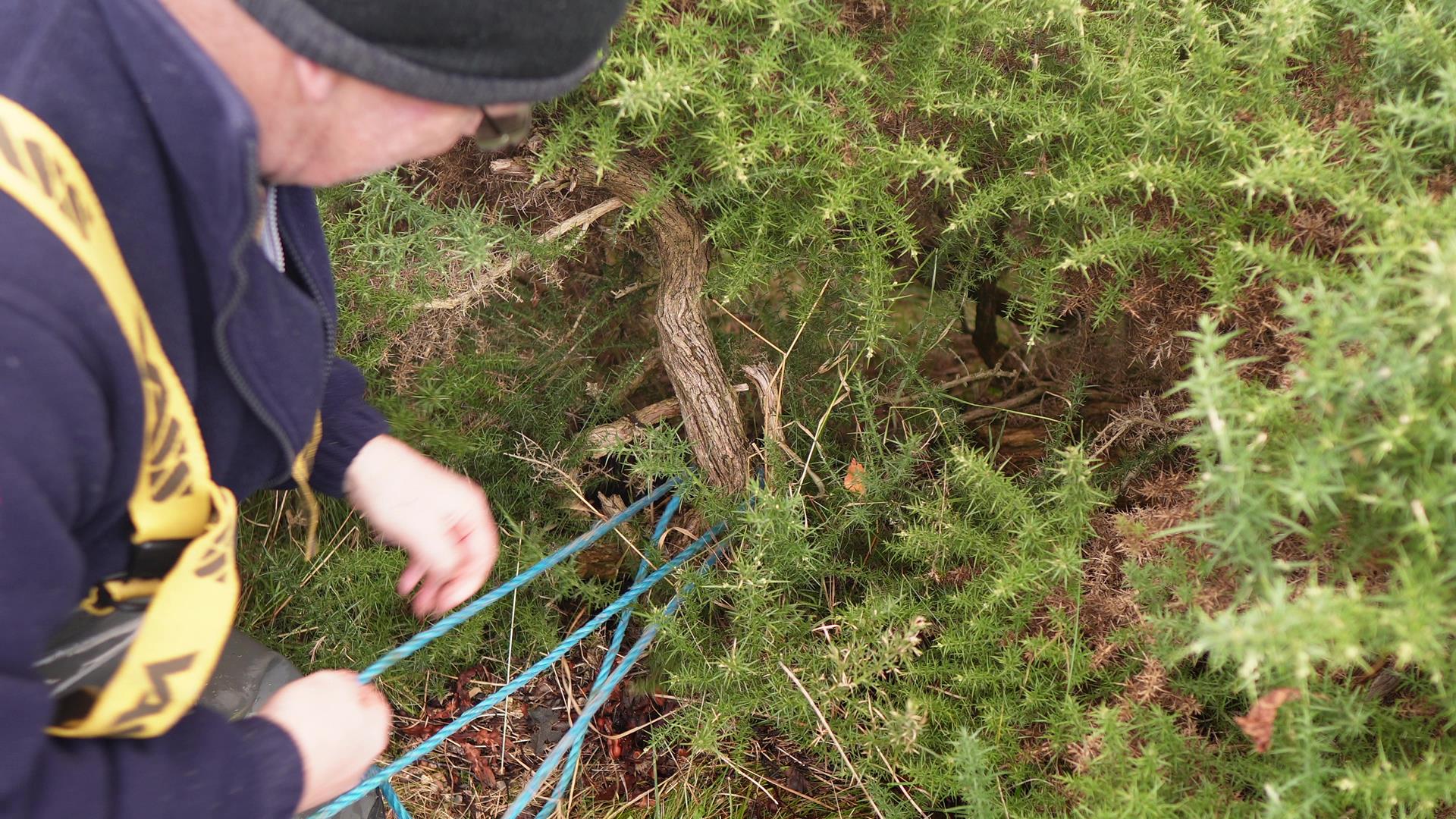
I prefer to tie the rope ends off to different trees if I can, to maintain separation between the ropes and reduce the risk of a tangle. However you can also simply fasten to one point and tie the ropes together to form a large loop. You might need to do this if you’ve anchored well out, or else you’ll run out of anchor rope!
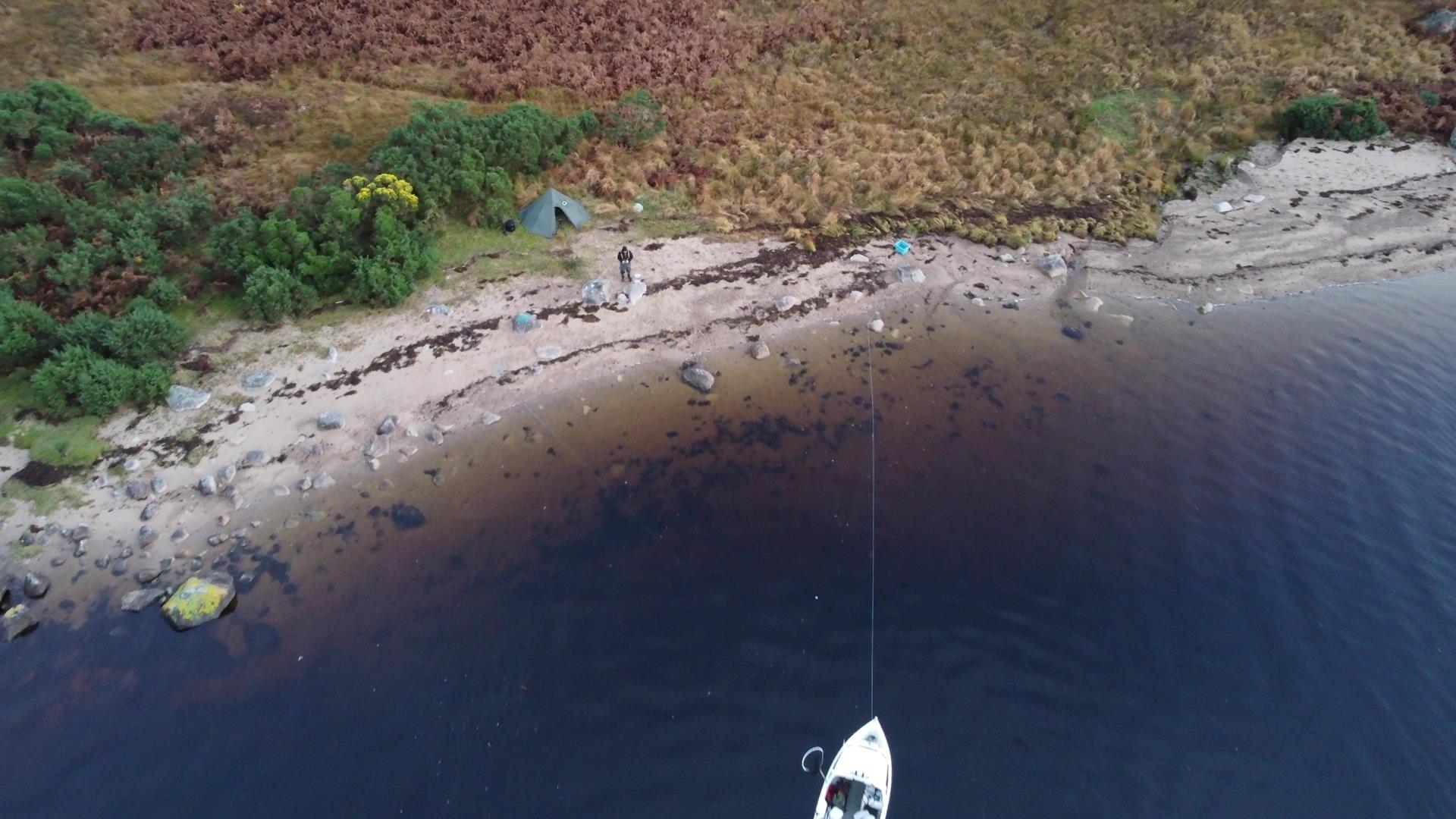
Retrieving Your Boat
Assuming your boat is still there in the morning, you’ll probably want to get it back to the beach. Very simple really – just reverse the process.
Free both ends of the rope from wherever you tied them.
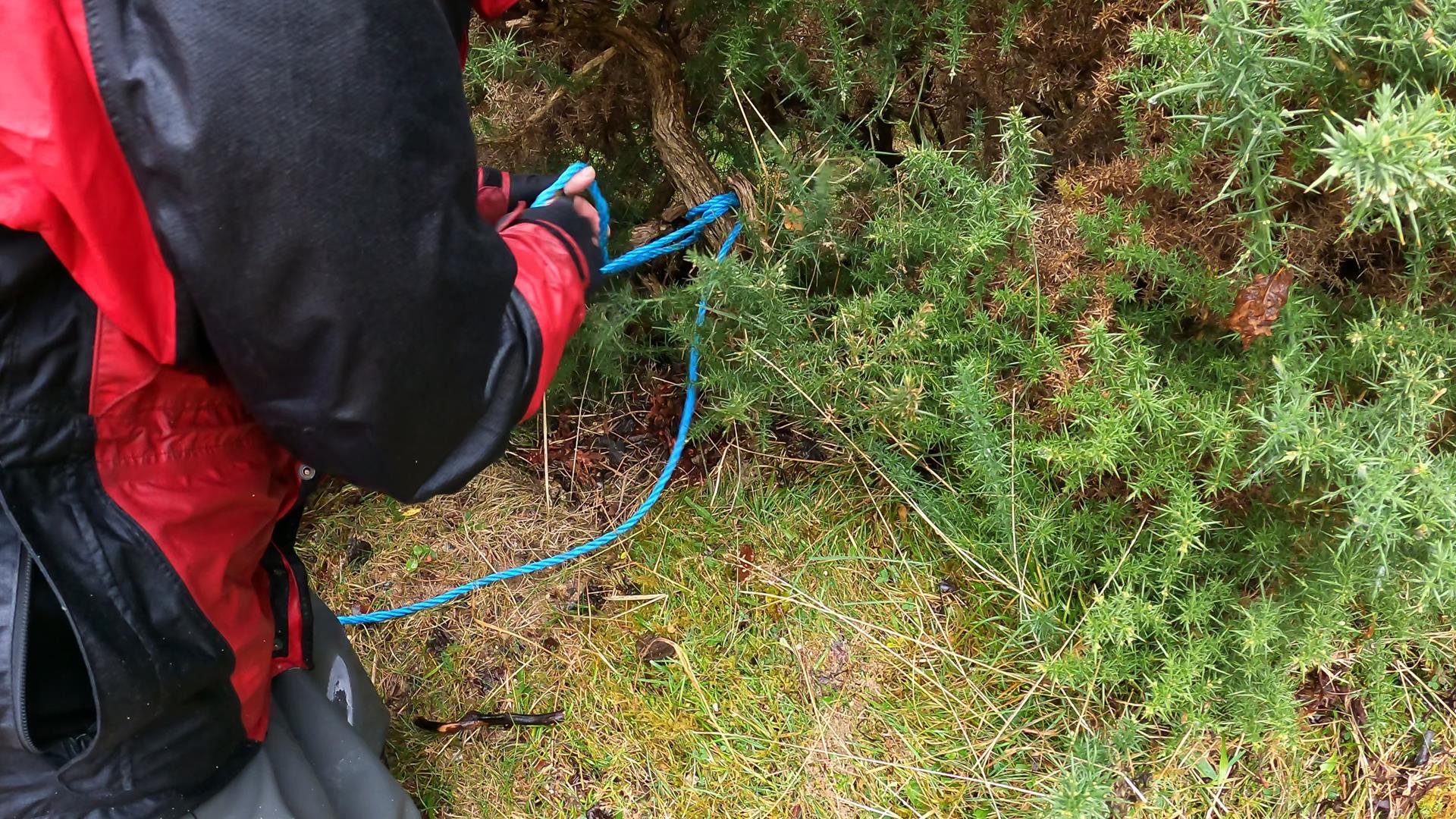
Haul your boat in, using the rope leading from the anchor box. The other end will be pulled out to sea, so make sure the end doesn’t get lost in the waves!

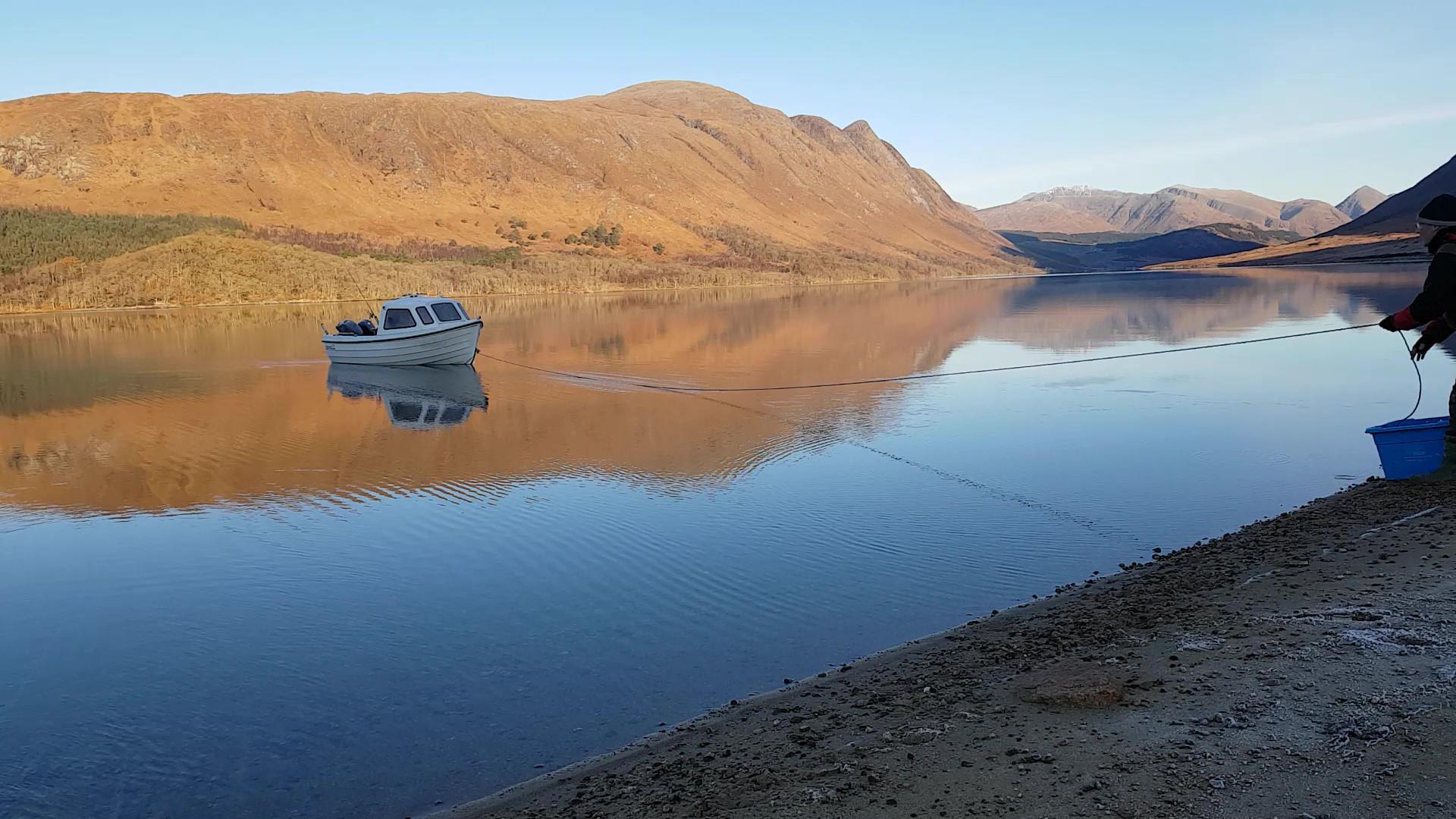

Once the boat is ashore I normally load any camping gear, etc. aboard the boat and make ready to leave before doing anything else. Make sure you are comfortable the boat is securely ashore on the beach – i.e. it doesn’t need the anchor rope to stop it drifting off the shoreline.
Tie the loose end of the rope off on a cleat.
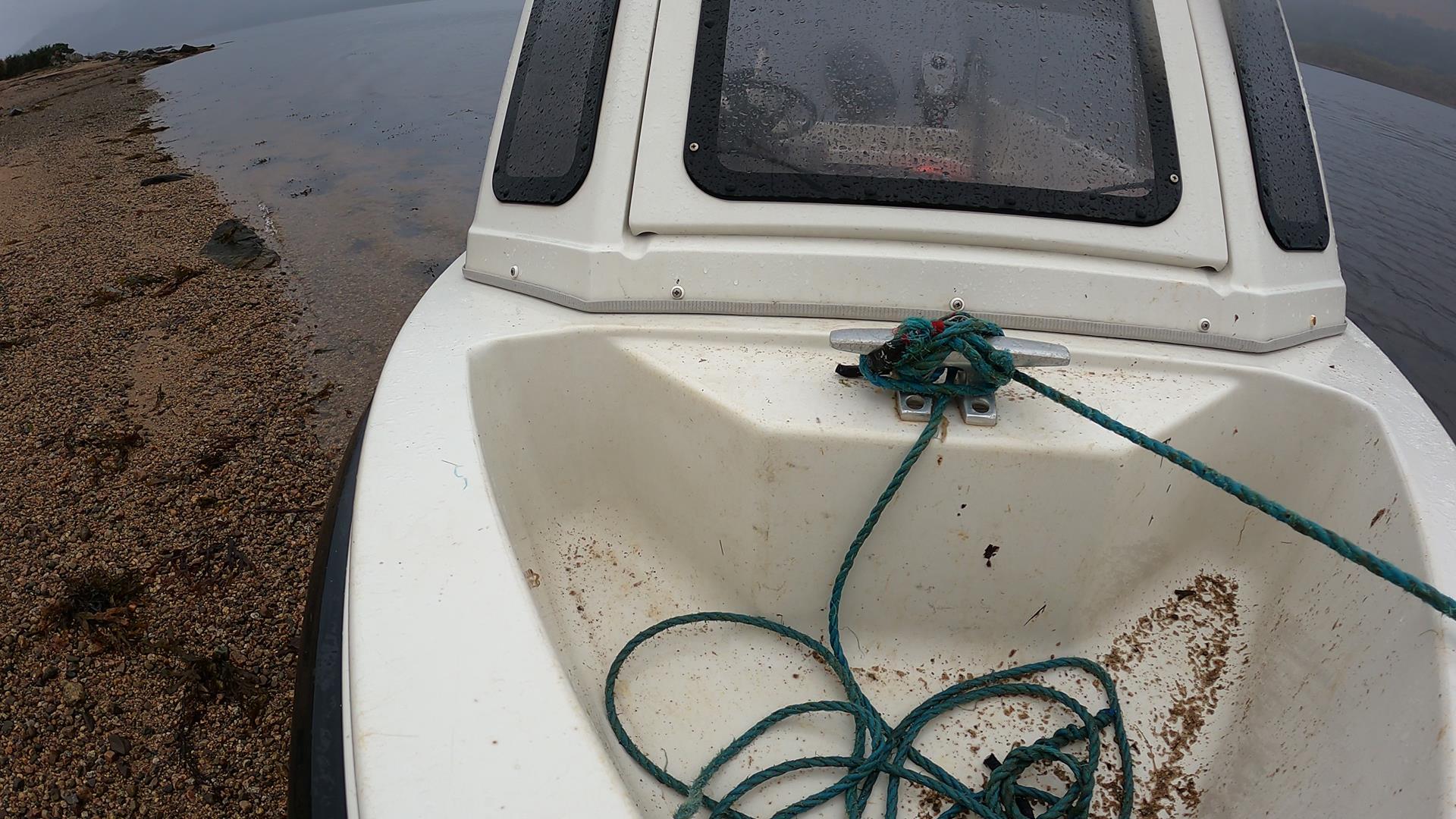
Untie the knot (or caribeener) in the bow eye. Coil any loose rope into the anchor box and place it on the bow or in your anchor well.

Simply haul on the unsecured rope (ie. the end not tied to a cleat). You will pull yourself out to the anchor.
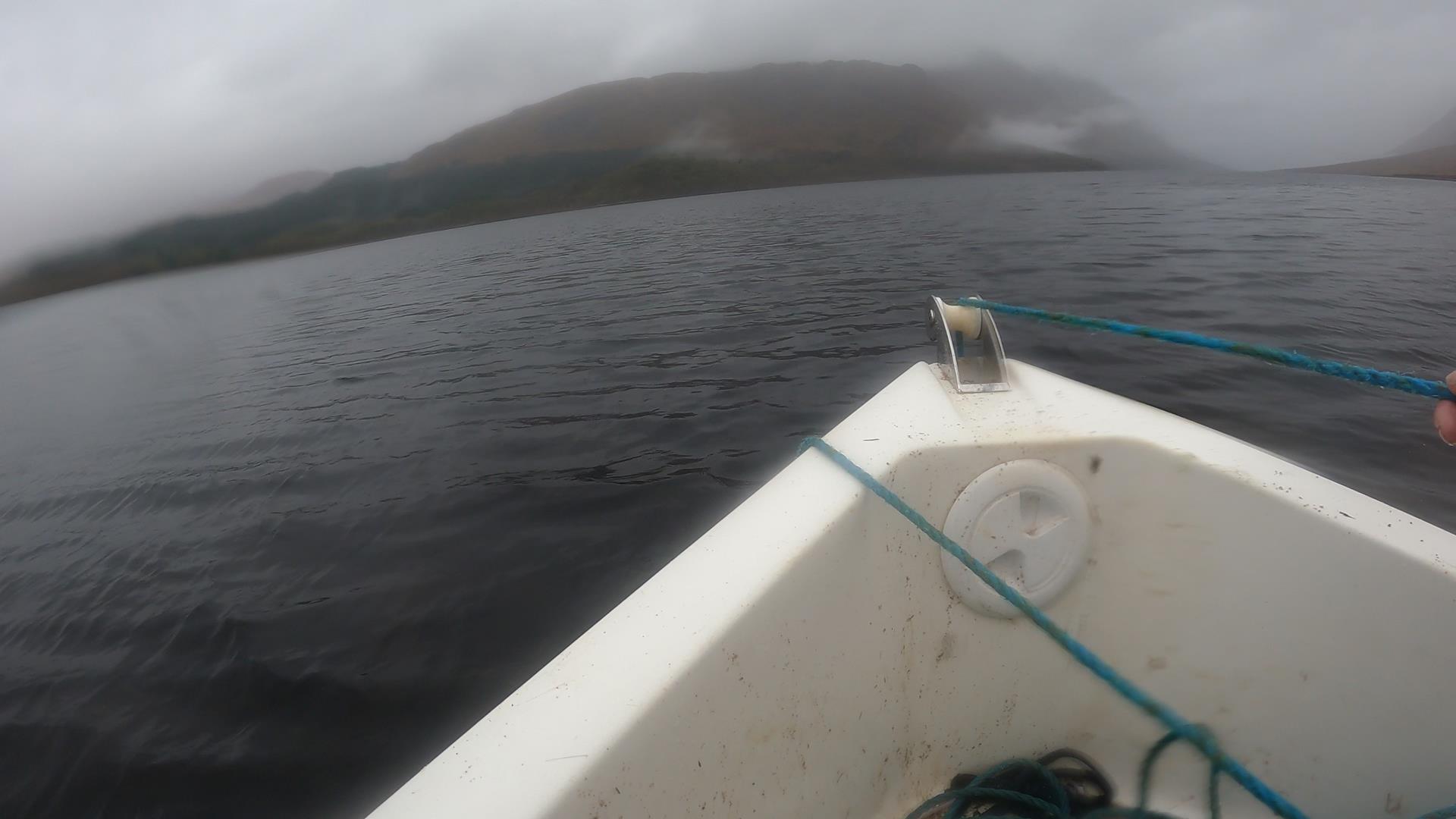
Lift the anchor. Once this is aboard I normally motor out a little way, just to give myself some clearance from the shore before sorting the anchor out.
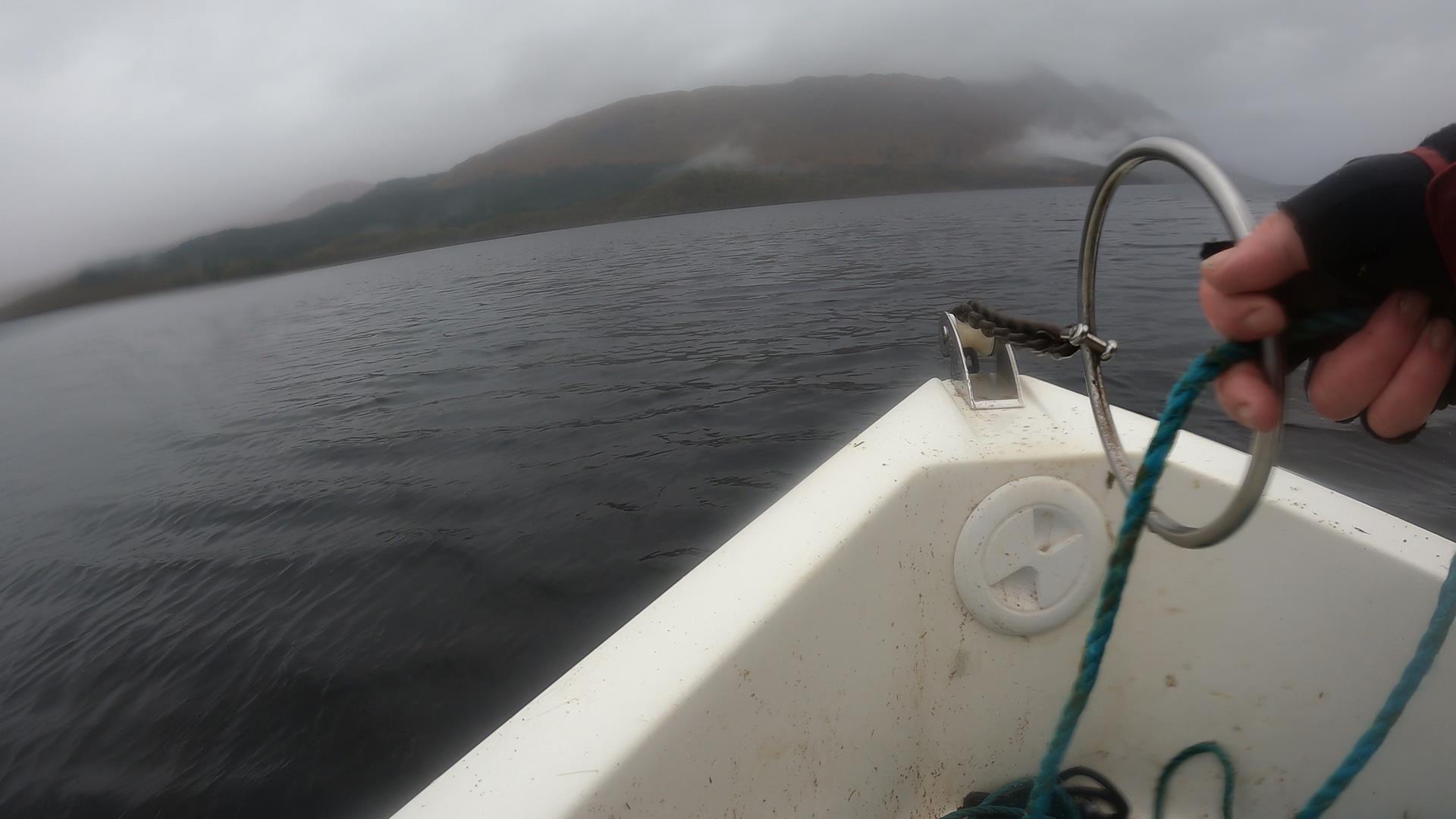
With everything onboard you can now switch the shackle back from the Alderney ring and onto the shackle at the end of the anchor rope. Job done!
Points to Consider
If there is a large tidal range you might want to allow a little slack in the rope to allow the boat to rise more easily. It only really matters if you anchor at low water and need to allow 3 or 4 metres for tidal rise.
I use polypropylene anchor rope rather than nylon. Largely because I’m a cheapskate, but it does float rather than sink. This increases the chances of it snagging on the boat (e.g. transducer), but reduces the risk of snagging on the seabed.
I normally tilt the outboard and transducer up when mooring, largely to reduce the risk of ropes snagging around it.
You could use a smaller diameter ring, or a pulley of some sort, but the main reason for using a larger ring is to avoid the rope jamming with weed, etc.
Watch for anything that might abrade your anchor rope whilst you snooze. Sharp rocks in particular!
I’ve done this dozens of times but I can still get slightly disorientated when I’m cold, tired and working in the dark. Remembering which end of the rope to pull can become a struggle at times! Consequently, I very strongly recommend practising this technique before relying on it 🙂
Share this:
Thanks for that , very well explained , I reckon even I could do it with a little practice !
Cheers
Robert
Hi Robert, I hope it is useful to someone as a few have asked. I still find I need to concentrate on the ropework when I’m mooring or recovering the boat – it’s quite easy to pull on the wrong rope in the dark or when you’re cold and wet.